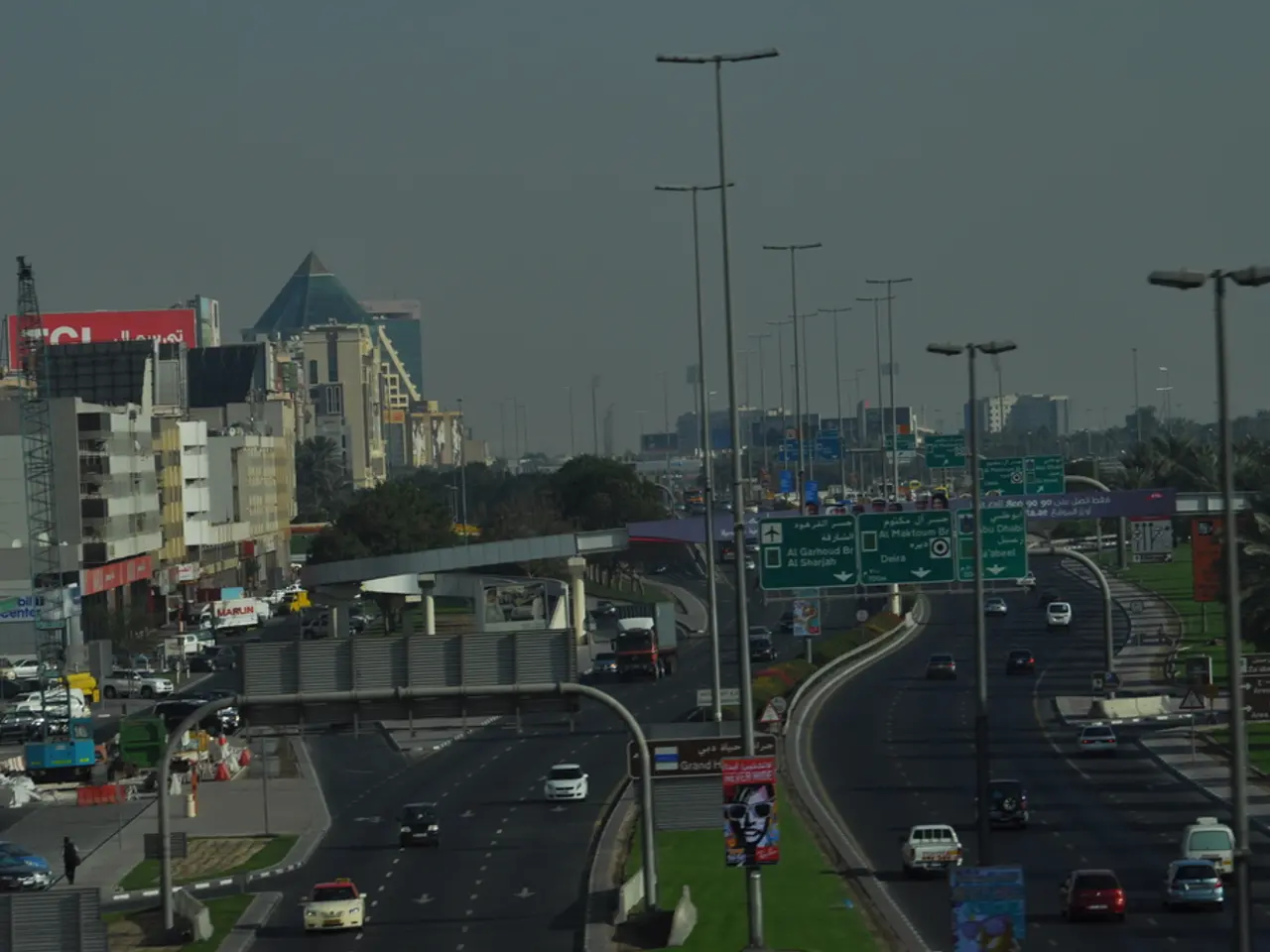Times Square moving towards becoming a more harmonious blend of residential, professional, and recreational neighborhood
Times Square Transforms into a Residential Hub
Times Square, known as the "Crossroads of the World," is undergoing a significant transformation, with a growing residential presence. One of the most notable developments is the conversion of the 38-story tower at 5 Times Square, which was completed in 2002 [1].
Previously home to Mayor Rudy Giuliani's consulting firm and Ernst & Young headquarters, the glass-clad skyscraper, located along Seventh Avenue between 41st and 42nd streets, is now being converted into a residential building [2]. This conversion, facilitated by a partnership between New York City and Empire State Development, will result in up to 1,250 residential units, including approximately 300 affordable units [3].
The Roseland Ballroom, a once-famous venue in 52nd Street, is another example of a venue replaced by a residential building. The ballroom closed in 2014, and a 62-story residential building now stands on its former site [2].
Despite the presence of crowds, trash, noise, and buskers, Times Square continues to attract New Yorkers seeking housing. In fact, according to the 2020 Census data, the residential population in Times Square is approximately 8,000 people [1].
Tom Harris, president of the Times Square Alliance, has expressed that the increase in residential units in Times Square could make it one of New York's hottest new addresses [3]. The conversion of 5 Times Square is expected to create a more balanced live, work, and play community in Times Square, shifting the area beyond primarily commercial and tourist uses [1].
In addition to the conversion of 5 Times Square, other redevelopment efforts are underway in Times Square. For instance, the Palace Theatre is undergoing a $2 billion redevelopment, transforming it into a mixed-use property with new retail, entertainment, and hotel space, though this does not directly involve residential units [3].
However, not all older buildings in Times Square have been demolished. Some have survived, contributing to the area's unique character. New construction has replaced some once-famous venues, but the residential development in Times Square is marking a new phase in the area’s development as an iconic place to live as well as work and visit [1][3].
This evolution of Times Square into a neighborhood with a substantially increased residential presence is a significant development for the iconic area. With the conversion of office buildings like 5 Times Square and new residential construction, Times Square is becoming a desirable place to call home in addition to being a popular tourist destination.
References: [1] New York Post. (2021, May 21). 5 Times Square to become a residential building with 1,250 units. Retrieved from https://nypost.com/2021/05/21/5-times-square-to-become-a-residential-building-with-1250-units/ [2] The New York Times. (2019, July 11). In Times Square, a New Tower Rises Where the Roseland Ballroom Once Stood. Retrieved from https://www.nytimes.com/2019/07/11/realestate/times-square-residential-tower-roseland-ballroom.html [3] Curbed New York. (2021, May 21). 5 Times Square is getting a massive residential conversion. Retrieved from https://ny.curbed.com/2021/5/21/22448753/5-times-square-residential-conversion-new-york-city-empire-state-development
Investing in real-estate, specifically the conversion of office buildings like 5 Times Square, is a strategic move for those looking to capitalize on Times Square's growing housing market. This transformation, supported by partnerships between New York City and Empire State Development, is attracting residents seeking a desired blend of living, working, and playing in the iconic neighborhood.
The recent redevelopment efforts, such as converting the 38-story tower at 5 Times Square into a residential building with up to 1,250 units, are reshaping Times Square from a solely commercial and tourist destination to a vibrant residential hub.




